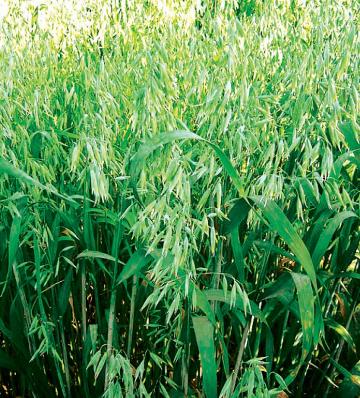
Oat (Avena sativa)
Local names: Oat, Jai, Ganer, Ganerji, Togi koddi
Oat is one of the most important cereal fodder crops of rabi season in North, Central and West Zone of the country. The introduction of oat hay in India is of recent origin. The hay can be baled easily with least transport difficulties. It is highly palatable to each type of livestock including sheep. It is generally sown at the end of September but some verieties can be sown in December. It can be sown alone or in a mixture with berseem.
Oat can be harvested at various stages for fodder purposes. The early varieties are generally sown by the end of September and the fodder is ready for harvest by the end of January. There are some varieties that can be sown in October/ November to get the harvest by the end of February. The late varieties are generally sown in November/ December to supply green fodder right to the end of April. Thus from January onwards oat fodders are available till the end of April not only for feeding as a green feed but also for conservation in the form of hay. The weather during these periods is most suitable for hay making. The average yield of grains obtained from these varieties is about 20-30 quintals/ hectare.
Nutritive value
The chemical composition of green fodder varies with the stage of harvest. Oat is a highly esteemed fodder specifically for conservation in the form of hay throughout the world. Oat may be considered as maintenance quality fodder containing about 7-9% crude protein, can be increased up to 11% by nitrogen fertilizers in which case it may be considered as a productive fodder. The grains are very much relished by horses, sheep, poultry and equines. It is an ideal fodder as a green chop, silage and hay mostly covering the lean periods of year. Oat contains protease inhibitor as antinutritional factor. Oat 17, Craigs afterlee, N.P. I, N.P. 3, Wild oats, Sativa kent, Filmingold etc are some of the important varieties.
